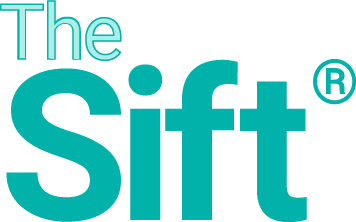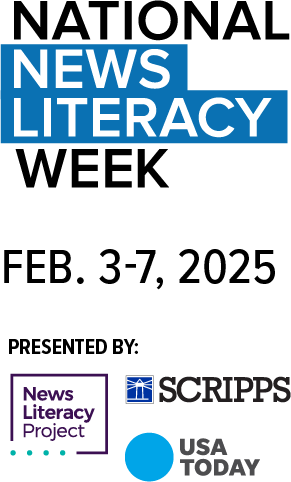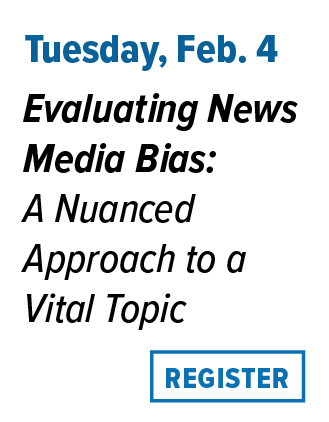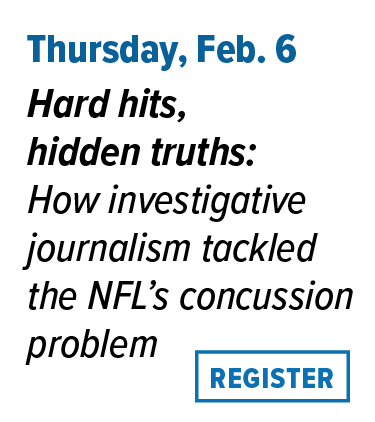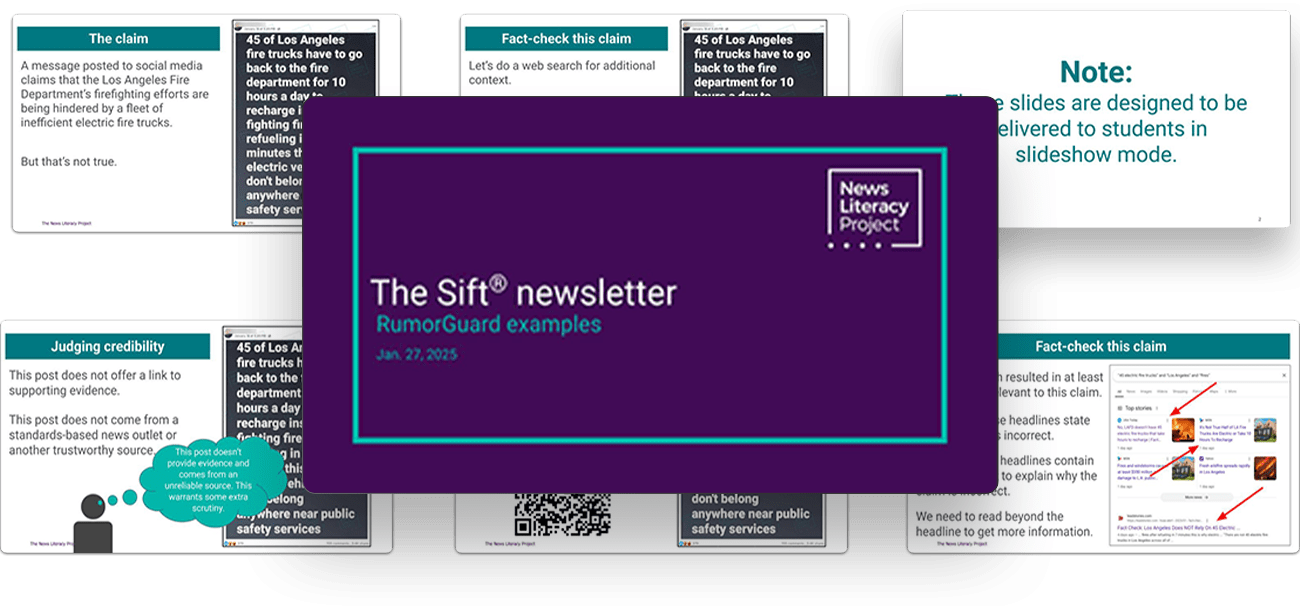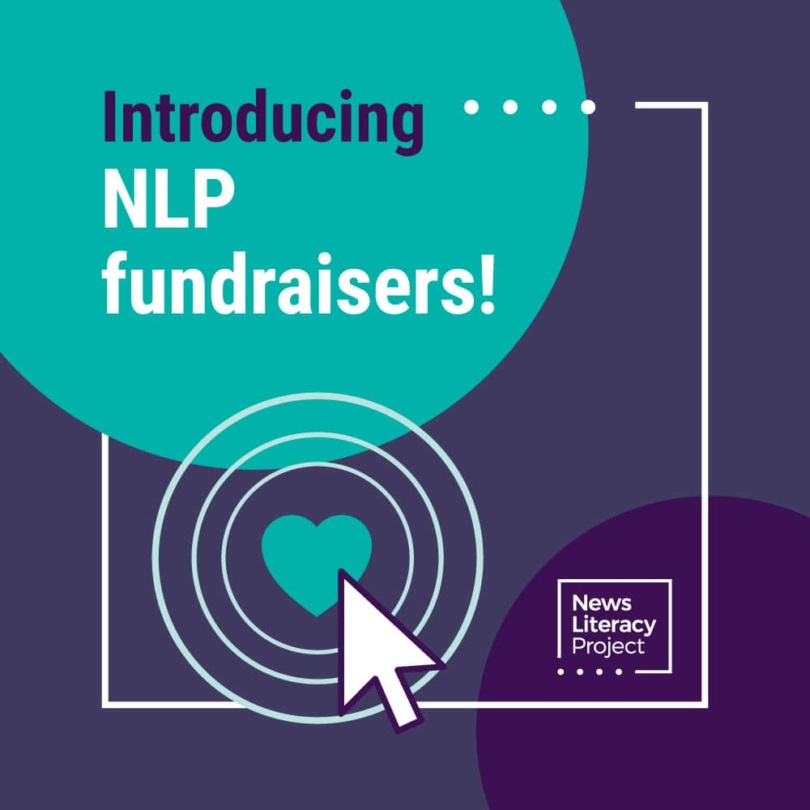The Sift: Teens’ smartphone detox | Musk hand gesture
In this issue
Teens’ smartphone detox | Musk hand gesture | RumorGuard slides | Daily Do Now slides
 Daily Do Now slidesDon't miss this week's classroom-ready resource.  |
Top picks
Educators, here are the latest news literacy topics and tips on how to integrate them into your classroom.

| Social media is designed to keep users hooked. |
1. Teens fight social media addiction with flip phone experiment
To improve his quality of life, a New Jersey teen swapped his smartphone for a flip phone, and it worked — reducing his screen time from five hours per day to about 30 minutes. His experience sparked an experiment for his eighth-grade peers to do the same for a week, including one friend who would routinely spend more than 10 hours a day on her phone watching TV shows and TikTok videos. The result: better sleep and improved productivity on schoolwork, but some frustrations over missing the convenience of certain apps.
They’re not the only teens thinking about excessive social media and smartphone usage. A 17-year-old self-professed “TikTok junkie” wrote in an op-ed published by The New York Times that she needs the TikTok ban to curb her addiction and save her generation from a distraction that “has pervaded every corner of our consciousness” and kept “roughly half of America … hooked” with its powerful algorithms. (The video-sharing app was temporarily offline on Jan. 19.)
Medical experts say increased screen time is linked to mental health conditions for teens.
| Idea: |
Ask students to check their device settings to see how many times a day they pick up their phone and any other details available that stand out to them (such as what they most often do when they pick up). Are they surprised by which apps they spend the most time on and other screentime data points? What percentage of their phone use is dedicated to news? If they went a week without a smartphone (and maybe watched the local evening news instead) how might their lives change?
- Another idea: Use the “Reflect” slide from Week 13 of the Daily Do Now resource to further discuss this issue.
★ NLP Resources:


"Introduction to Algorithms" (Checkology virtual classroom).
| Related: |
- “A closer look at Americans’ experiences with news on TikTok” (Pew Research Center).
- “Tech companies want teens to use their apps. Pinterest says not in school.” (The Washington Post).
2. News coverage of Musk draws criticism
When X owner Elon Musk, an advisor to President Donald Trump, gave an Inauguration Day speech and made what looked to some like a Nazi “Sieg Heil” salute — twice — the gesture became the story. It also became a flashpoint for criticism of the way the speech was covered by the news media.
Some critics on the political right characterized the story as a hoax by the media, while critics on the left saw it as a reluctance from mainstream media to clearly state what they considered obvious. One media critic speculated that some early headlines were tempered by a fear of defamation suits. The story continued to evolve, however, with follow-up news coverage that was more pointed, including reporting about the enthusiastic reaction the gesture elicited among right-wing extremists.
While the intent behind the gesture remains ambiguous, one thing is clear: it’s receiving plenty of attention from the press, even as Musk continues to deny it was anything other than a heartfelt wave.
| Discuss: |
What challenges do journalists face when covering breaking news and interpreting controversial events? Why might the initial news coverage about an event be different from later coverage? If you were a journalist and had to write a fair and accurate headline, or an entire report, about Musk’s speech, what would you have written?
★ NLP Resources:


“Practicing Quality Journalism” (Checkology virtual classroom).
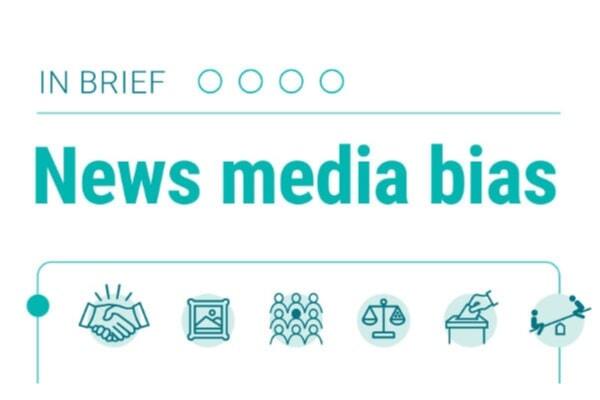

Infographic: “In brief: News media bias” (NLP’s Resource Library)


Infographic: “Breaking news checklist”
| Related: |
- “Symbol of unity? Inauguration news coverage illustrates differences that pull country apart” (The Associated Press).
3. How ethical are food influencers?
Whether it’s a juicy burger or scrumptious-looking cheesecake, food influencers and food journalists share their favorite — or least favorite — restaurant orders. But there’s a few differences in how they do this. Austin Chronicle restaurant critic Taylor Tobin explains in this piece how he follows certain guidelines to be fair and thorough, like not accepting free food, ordering a variety of menu items and waiting at least 60 days after a restaurant opens to review it. Food influencers generally don’t follow the same ethical standards, but they build trust with their audience by creating engaging, personal photos and video posts. Journalists and creators that Tobin interviewed suggest that food journalists and influencers collaborate and bring together the best of both worlds — following ethical standards and including in-depth analysis while connecting with audiences through vibrant visuals on social media.
| Discuss: |
What standards and ethical guidelines do food journalists follow? How are these ethics different from influencers and content creators? Why do so many social media users trust influencers, even if these ethics are absent? What impact could unethical food reviews have on a local business? How can you evaluate food posts on social media for signs of credibility?
| Idea: |
Ask students to write a restaurant review (or a review of a home-cooked meal) and share their experiences with the class. To what extent do they feel they were fair and accurate when writing the review? Were they able to remain independent, regardless of their personal feelings about the business or person? How might they have approached their reviews differently if they were influencers?
- Another idea: Have students find an influencer video and a standards-based food review about the same restaurant. Then ask them to compare the two. Which is more informative? Engaging? How were they similar? Different?
| Note: |
For more teaching tips and ideas, check out NLP’s edWebinar “Teach With TikTok: Help Students Stick to the Facts on Social Media.”
★ NLP Resources:


“InfoZones” (Checkology virtual classroom).
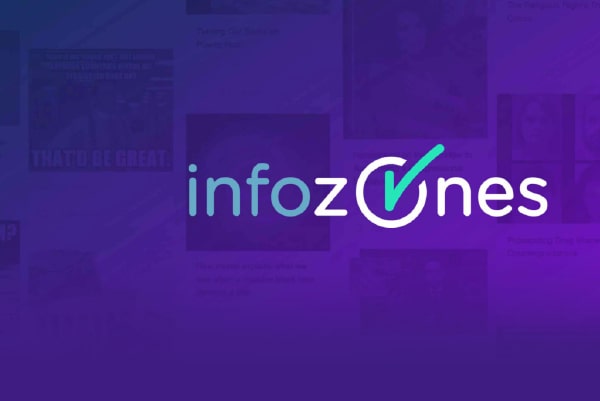

Poster: “Six zones of information.”
| Related: |
- “7 Ways Influencers Are Changing the Media Landscape” (Pen America).


★ Featured classroom resource:
|
No, Meta isn’t making users follow Trump and Vance
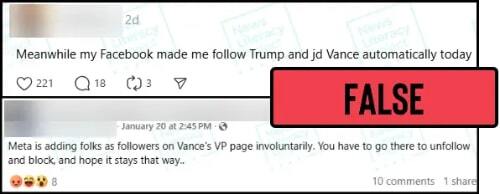

❌ NO: Meta is not forcing people to follow President Donald Trump and Vice President JD Vance on social media.
✅ YES: The @potus and @vp official social media accounts belong to the sitting president and vice president of the United States.
✅ YES: When Trump and Vance took office, the official social media accounts for their positions transferred to them.
★ NewsLit takeaway
The simplest explanation is often the correct one. This principle, known as Occam’s Razor, can be very useful when examining questionable claims on social media. While viral claims suggest that Meta is forcing people to follow President Donald Trump on Facebook and Instagram, fact-checkers found users were just following the official account of the president (@potus), which is automatically transferred between administrations. Here’s how to fact-check this claim:
Look for official statements from authoritative sources: Meta’s communications director posted a message explaining that the accounts for president, vice president and first lady all belong to the sitting occupants of the White House.
Check archival pages: Use web archivers, such as the Wayback Machine, to check for evidence that the @potus handle belonged to former President Joe Biden during his term in office, Trump during his first term in office, and former President Barack Obama during his term.
| Idea: |
Have students watch a short video on slide 18 of the RumorGuard teaching slides to walk through fact-checking this rumor with NLP’s misinformation expert.
No, California isn’t using fleet of electric fire trucks to fight fires
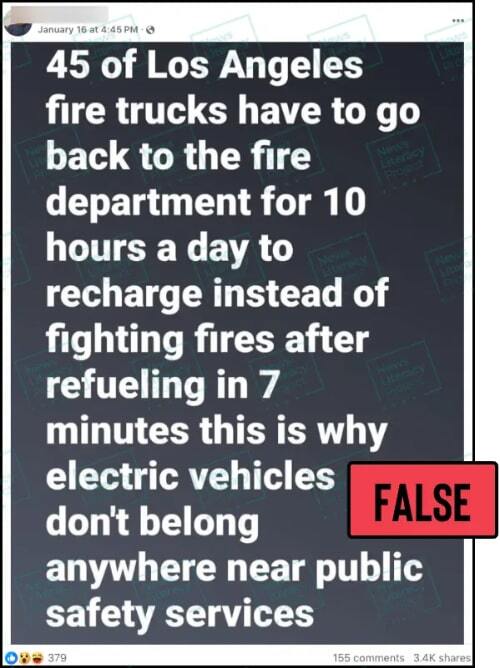

❌ NO: The Los Angeles Fire Department does not have 45 electric fire trucks.
✅ YES: The department has a single fire truck with an electric engine in its entire fleet.
❌ NO: The LAFD’s electric fire engine does not take 10 hours to recharge.
✅ YES: This claim originated on a satirical page, then spread online with no disclaimer.
★ NewsLit takeaway
Online claims that appeal to preconceived biases often go unexamined since they feel accurate. In this case, people who believe the California wildfires were exacerbated by “woke” policies in the state, such as the use of electric vehicles, might accept this claim as genuine without any further investigation. Here are a few simple steps to resist the pull of confirmation bias:
- Check for evidence. A statement on social media unaccompanied by links or any other supporting evidence should be viewed with skepticism.
- Consider the source. If a claim comes from a source that is unfamiliar, take time to look at that profile and examine its post history.
- Look for context. A simple web search can provide additional information. Looking for “Los Angeles,” “wildfires” and “electric fire trucks” results in multiple fact checks for this claim, as well as news articles about LAFD’s purchase of a single electric fire engine.


| After journalists were kicked out of the House chamber floor in Kansas, an amendment to restore press access was rejected by the majority of its members. Press advocates say the restrictions violate the First Amendment, but House Speaker Dan Hawkins said he needed to give his staff a better place to sit. | |
| Disciplinary actions have been dropped against a Stanford University student journalist who reported for the school newspaper and followed pro-Palestinians protestors that unlawfully entered the university president’s office. (Note: See teaching tips on this topic from the Dec. 9, 2024, issue of The Sift.) | |
| Have your social media algorithms got you feeling pigeonholed, powerless or misrepresented? Try resetting your algorithm on TikTok, Instagram and YouTube. | |
| If you read articles before sharing them online, you’re in the minority. Facebook users don’t read about 75% of news articles before they repost them, according to a new study. (News literacy tip: pause before you share!) | |
| Beware of “Yahoo Boy” scammers who blackmail people by using AI to impersonate news organizations and demand payments. | |
| More climate misinformation will likely spread further on Facebook and Instagram after Meta decided to end its fact-checking program in March, argues journalism professor Jill Hopke. She fears this could pose a big threat during climate-fueled disasters when people need to find accurate information quickly. | |
| When disaster strikes, local TV news coverage is a critical resource. During the Los Angeles wildfires, viewers tuned in to watch local journalists report updates on neighborhood evacuations and destruction. | |
| Although journalism ethics often prohibits reporters from interfering with a story as it unfolds, NBC4 reporters in LA held on to paintings for a man on a bike who was fleeing the wildfires. The man’s home burned down and he was later reunited with his paintings — one was called “Man on a Bike.” |
Thanks for reading!
Your weekly issue of The Sift is created by Susan Minichiello (@susanmini.bsky.social), Dan Evon (@danieljevon), Peter Adams (@peteradams.bsky.social), Hannah Covington (@hannahcov.bsky.social) and Pamela Brunskill (@PamelaBrunskill). It is edited by Mary Kane (@mk6325.bsky.social) and Lourdes Venard (@lourdesvenard.bsky.social).
You’ll find teachable moments from our previous issues in the archives. Send your suggestions and success stories to [email protected].

